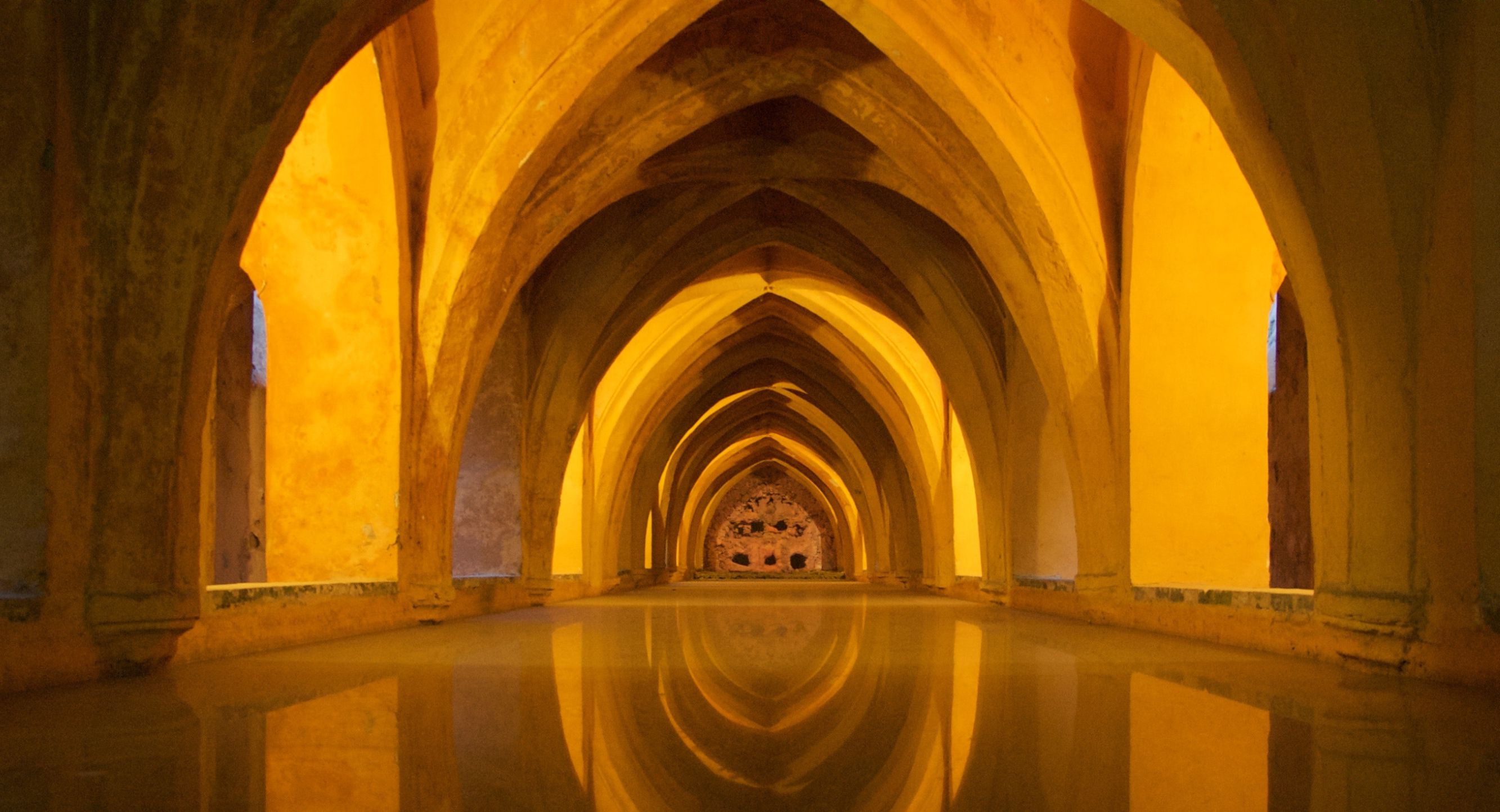Unveiling the Plant Living in the Desert (Jer 17:6): A Multidisciplinary Approach
Abstract
In the context of the study of plants in the Bible, some translation problems are related to the identification of the plant species referred to in the biblical text. One of the unresolved problems concerns the plant living in the desert of Jer 17:6, because the botanists’ proposals have not been understood in the same way by the exegetes: it is not clear whether it is a tree, a bush or a shrub and to which plant species it refers. After presenting the general characteristics of the study of plants in the Bible, the research presents proposals for identification by botanists and how these have been received by exegetes. The study of the biblical context integrated with the dynamics of plant growth allows a better understanding of the two opposing metaphorical images of Jeremiah: the plant living in the desert and the tree that grows along streams. The analysis indicates a generic tree which, due to the difficult environmental conditions, cannot develop as such and remains smaller in size. The best translation is therefore a generic shrub, which also allows the different interpretations to be reconciled.
Keywords:
Bible plants, tree metaphor, Jeremiah 17:5-8, opposing metaphorical images, forest interpretationReferences
Allen, Leslie C. 2008. Jeremiah: A Commentary. Old Testament Library. Louisville, KY: Westminster John Knox.
Alonso Schökel, Luis. 2013. Dizionario di ebraico biblico. Edited by Marco Zappella. Translated by Teodora Tosatti and Rita Torti Mazzi. Cinisello Balsamo: San Paolo.
Alonso Schökel, Luis, and Cecilia Carniti. 2007. I salmi. 2nd ed. Translated by Antonio Nepi. Vol. 2. Commenti biblici. Roma: Borla.
Balfour, John Hutton. 1885. The Plants of the Bible. 2nd ed. London: Nelson & Sons.
El-Bana, Magdy, Kamal Shaltout, Ahmed Khalafallah, and Hosni Mosallam. 2010. “Ecological Status of the Mediterranean Juniperus phoenicea L. Relicts in the Desert Mountains of North
Sinai, Egypt.” Flora – Morphology, Distribution, Functional Ecology of Plants 205 (3): 171–78. https://doi.org/10.1016/j.flora.2009.04.004.
Barbiero, Gianni. 2012. Le confessioni di Geremia: Storia di una vocazione profetica. Milano: Paoline.
Baruch, Uri, and Nigel Goring-Morris. 1997. “The Arboreal Vegetation of the Central Negev Highlands, Israel, at the End of the Pleistocene: Evidence from Archaeological Charred Wood Remains.” Vegetation History and Archaeobotany 6 (4): 249–59. https://doi.org/10.1007/bf01370446.
Beauchamp, Paul. 2004. Salmi notte e giorno. 3rd ed. Translated by Giampaolo Natalini. Assisi: Cittadella.
Brueggemann, Walter. 2015. Geremia: Esilio e ritorno. Translated by Francesca Carosio. Strumenti 68. Torino: Claudiana.
Brueggemann, Walter, and William H. Bellinger. 2014. Psalms. New Cambridge Bible Commentary. New York: Cambridge University Press.
Carroll, Robert P. 1986. Jeremiah: A Commentary. Old Testament Library. London: SCM.
Caudullo, Giovanni, Erik Welk, and Jesús San-Miguel-Ayanz. 2017. “Chorological Maps for the Main European Woody Species.” Data in Brief 12: 662–66. https://doi.org/10.1016/j.dib.2017.05.007.
Celsius, Olaf. 1748. Hierobotanicon, sive de plantis Sacrae Scripturae, dissertationes breves. Amstelaedami: Wetstenium.
Chávez, Moisés. 1997. Diccionario de hebreo bíblico. 3rd ed. El Paso, TX: Editorial Mundo Hispano.
Dafni, Amots, and Barbara Böck. 2019. “Medicinal Plants of the Bible—Revisited.” Journal of Ethnobiology and Ethnomedicine 15: article no. 57. https://doi.org/10.1186/s13002-019-0338-8.
Danin, Avinoam. 1992. “Flora and Vegetation of Israel and Adjacent Areas.” Bocconea 3:18–42.
Accessed Nov 15, 2022. https://www.herbmedit.org/bocconea/3-018.pdf.
Danin, Avinoam. 1999. “Desert Rocks as Plant Refugia in the Near East.” The Botanical Review 65 (2): 93–170. https://doi.org/10.1007/bf02857625.
Danin, Avinoam. 2004. Distribution Atlas of Plants in the Flora Palaestina Area. Jerusalem: The Israel Academy of Sciences and Humanities.
Duke, James A., Peggy-Ann K. Duke, and Judith L. duCellier. 2008. Duke’s Handbook of Medicinal Plants of the Bible. Boca Raton, FL: Taylor & Francis.
Elliger, Karl, and Wilhelm Rudolph, eds. 1997. Biblia Hebraica Stuttgartensia. 5th ed. Stuttgart: Deutsche Bibelgesellschaft.
Farjon, A. 2013. “Juniperus oxycedrus.” IUCN Red List of Threatened Species, e.T42243A2965838. https://doi.org/10.2305/iucn.uk.2013-1.rlts.t42243a2965838.en.
Goldingay, John. 2021. The Book of Jeremiah. New International Commentary on the Old Testament. Grand Rapids, MI: Eerdmans.
Grilli Caiola, Maria, Paolo M. Guarrera, and Alessandro Travaglini. 2013. Le piante nella Bibbia. Roma: Gangemi.
Grossoni, Paolo, Piero Bruschi, Filippo Bussotti, and Federico Selvi. 2018. Parte generale e gimnosperme. Vol. 1 of Trattato di botanica forestale. Milano: Wolters Kluwer.
Hareuveni, Nogah. 1991. Desert and Shepherd in Our Biblical Heritage. Translated by Helen Frenkley. Neot Kedumim: The Biblical Landscape Reserve in Israel.
Hepper, F. Nigel. 1992. Baker Encyclopedia of Bible Plants: Flowers and Trees, Fruits and Vegetables, Ecology. Leicester: Three’s Company.
Hepper, F. Nigel. 2001. “The Cultivation of the Cedar of Lebanon in Western European Parks and Gardens from the 17th to the 19th Century.” Arboricultural Journal 25 (3): 197–219. https://doi.org/10.1080/03071375.2001.9747306.
Holladay, William Lee. 1986. Chapters 1–25. Vol. 1 of Jeremiah 1: A Commentary on the Book of the Prophet Jeremiah, edited by Paul D. Hanson. Philadelphia, PA: Fortress.
Jensen, Hans Arne. 2020. Il mondo delle piante nella Bibbia. Translated by Fabio Gorian. San Pietro in Cariano: Gabrielli.
Joosten, Jan. 2010. “La critica testuale.” In Manuale di esegesi dell’Antico Testamento, edited by Michaela Bauks and Christophe Nihan, translated by Fabrizio Ficco, 15–43. Bologna: Dehoniane.
Kaiser, Walter C., and Tiberius Rata. 2019. Walking the Ancient Paths: A Commentary on Jeremiah. Bellingham, WA: Lexham Press.
Keil, Carl Friedrich. 1880. The Prophecies of Jeremiah. Translated by David Patrick. Vol. 1. Edinburgh: Clark.
Koehler, Ludwig, Walter Baumgartner, Johann J. Stamm, Benedikt Hartmann, Ze’ev Ben-Hayyim, Eduard Y. Kutscher, and Philippe Reymond. 1994. The Hebrew and Aramaic Lexicon of the Old Testament. Edited by M. E. J. Richardson. Leiden: Brill.
Lamonaca, Andrea. 2023. “L’utilizzo del cedro del Libano nella Bibbia e la metafora forestale di Sal 92,13–15.” Gregorianum 104 (2): 239–59. https://doi.org/10.32060/Gregorianum.1 04/2.2023.239-259.
Liphschitz, Nili, and Y. Waisel. 1973. “Dendroarchaeological Investigations in Israel (Tel Beersheba and Arad in the Northern and Eastern Negev).” Israel Exploration Journal 23: 30–36.
Litt, Thomas, Christian Ohlwein, Frank H. Neumann, Andreas Hense, and Mordechai Stein. 2012. “Holocene Climate Variability in the Levant from the Dead Sea Pollen Record.” Quaternary Science Reviews 49: 95–105. https://doi.org/10.1016/j.quascirev.2012.06.012.
Lorenzin, Tiziano. 2009. I Salmi: Nuova versione, introduzione e commento. 4th ed. Milano: Paoline.
Lundbom, Jack R. 1999. Jeremiah 1–20: A New Translation with Introduction and Commentary. Anchor Bible, 21A. New York: Doubleday.
Maillat, Solange, and Jean Maillat. 1999. Les plantes dans la Bible: Guide de la flore en Terre Sainte. Méolans-Revel: DésIris.
Mazur, Małgorzata, Monika Zielińska, Krystyna Boratyńska, Angel Romo, Montserrat Salva-Catarineu, Katarzyna Marcysiak, and Adam Boratyński. 2018. “Taxonomic and Geographic Differentiation of Juniperus phoenicea agg. Based on Cone, Seed, and Needle Characteristics.” Systematics and Biodiversity 16 (5): 469–82. https://doi.org/10.1080/14772000.2018.1439120.
McKane, William. 1986. Introduction and Commentary on Jeremiah I–XXV. Vol. 1 of A Critical and Exegetical Commentary on Jeremiah. International Critical Commentary. Edinburgh: Clark.
Meiggs, Russell. 1982. Trees and Timber in the Ancient Mediterranean World. Oxford: Oxford University Press.
Miller, Patrick D. 2001. “The Book of Jeremiah. Introduction, Commentary, and Reflections.” In Introduction to Prophetic Literature, the Book of Isaiah, the Book of Jeremiah, the Book of Baruch, the Letter of Jeremiah, the Book of Lamentations, the Book of Ezekiel, vol. 6 of The New Interpreter’s Bible, 553–926. Nashville, TN: Abingdon.
Moldenke, Harold N., and Alma L. Moldenke. 1952. Plants of the Bible. New York: Ronald Press.
Muraoka, Takamitsu. 2009. A Greek-English Lexicon of the Septuagint. Leuven: Peeters.
Musselman, Lytton John. 2007. Figs, Dates, Laurel, and Myrrh: Plants of the Bible and the Quran. Portland, OR: Timber Press.
Musselman, Lytton John. 2012. A Dictionary of Bible Plants. Cambridge: Cambridge University Press.
Neumann, Frank H., Elisa J. Kagan, Suzanne Alice Ghislaine Leroy, and U. Baruch. 2010. “Vegetation History and Climate Fluctuations on a Transect along the Dead Sea West Shore and Their Impact on past Societies over the Last 3500 Years.” Journal of Arid Environments 74 (7): 756–64. https://doi.org/10.1016/j.jaridenv.2009.04.015.
Neumann, Frank H., Elisa J. Kagan, Mordechai Stein, and Amotz Agnon. 2009. “Assessment of the Effect of Earthquake Activity on Regional Vegetation – High-Resolution Pollen Study of the Ein Feshka Section, Holocene Dead Sea.” Review of Palaeobotany and Palynology 155 (1–2): 42–51. https://doi.org/10.1016/j.revpalbo.2008.12.016.
Poljakoff-Mayber, Alexandra, and H.R. Lerner. 1999. “Plants in Saline Environments.” In Handbook of Plant and Crop Stress, 2nd ed., edited by Mohammad Pessarakli, 125–52. Books in Soils, Plants, and the Environment. New York: Dekker.
Post, George E., and John Edward Dinsmore. 1933. Flora of Syria, Palestine and Sinai. Vol. 2 of A Handbook of the Flowering Plants and Ferns, Native and Naturalized from the Taurus to Ras Muhammad and from the Mediterranean Sea to the Syrian Desert, 2nd ed. Beirut: American Press .
Reymond, Philippe. 1995. Dizionario di ebraico e aramaico biblici. Translated by J. Alberto Soggin. Roma: Società Biblica Britannica e Forestiera.
Rossi, Benedetta. 2022. “Jeremiah.” In The Jerome Biblical Commentary for the Twenty-First Century, 3rd ed., edited by John J. Collins, Gina Hens-Piazza, Barbara E. Reid, Donald Senior, and Francis, 875–940. London: Bloomsbury Clark.
Salvà-Catarineu, Montserrat, Angel Romo, Małgorzata Mazur, Monika Zielińska, Pietro Minissale, Ali A. Dönmez, Krystyna Boratyńska, and Adam Boratyński. 2021. “Past, Present, and Future Geographic Range of the Relict Mediterranean and Macaronesian Juniperus phoenicea Complex.” Ecology and Evolution 11 (10): 5075–95. https://doi.org/10.1002/ece3.7395.
Seely, David R. 1992. “Arabah.” In The Anchor Bible Dictionary, edited by David Noel Freedman, 1:321–24. New York: Doubleday.
Segura Munguía, Santiago, and Javier Torres Ripa. 2011. Las plantas en la Biblia. Bilbao: Universidad de Deusto.
Settembrini, Marco. 2019. Daniele: Introduzione, traduzione e commento. Nuova Versione della Bibbia dai Testi Antichi 26. Cinisello Balsamo: San Paolo.
Tatu, Silviu. 2006. “Jotham’s Fable and the Crux Interpretum in Judges IX.” Vetus Testamentum 56 (1): 105–24. https://doi.org/10.1163/156853306775465108.
United Bible Societies. 1980. Fauna and Flora of the Bible. 2nd ed. Helps for Translators. London: United Bible Societies.
Voth, Steven. 2009. “Jeremiah.” In Isaiah, Jeremiah, Lamentations, Ezekiel, Daniel, vol. 4 of Zondervan Illustrated Bible Backgrounds Commentary, edited by John H. Walton, 228–371. Grand Rapids, MI: Zondervan.
Walser, Georg. 2012. Jeremiah: A Commentary Based on Ieremias in Codex Vaticanus. Septuagint Commentary Series. Leiden: Brill.
Włodarczyk, Zofia. 2007. “Review of Plant Species Cited in the Bible.” Folia Horticulturae 19 (1): 67– 85.
Włodarczyk, Zofia. 2018. “Biblical Garden – A Review, Characteristics and Definition Based on Twenty Years of Research.” Folia Horticulturae 30 (2): 229–48. https://doi.org/10.2478/fhort2018-0020.
Włodarczyk, Zofia, and Anna Kapczyńska. 2019. “Biblical Gardens in Word Culture: Genesis and History.” Journal of Agricultural and Environmental Ethics 32 (5–6): 835–54. https://doi.org/10.1007/s10806-019-09801-3.
Zohary, Michael. 1982. Plants of the Bible: A Complete Handbook. Cambridge: Cambridge University Press.
Independent Scholar
Rev. Andrea Lamonaca - Academic degrees:
- Licence in Biblical Theology (2021)
- D. in Science and Technology for Forest and Environmental Management (2006)
Publications: - Lamonaca, A. 2023. “L’utilizzo del cedro del Libano nella Bibbia e la metafora forestale di Sal 92,13-15.” Gregorianum 104 (2): 239–259. (https://doi.org/10.32060/Gregorianum.104/2.2023.239-259).
- Lamonaca, A., P. Corona, and A. Barbati. 2008. “Exploring forest structural complexity by multi-scale segmentation of VHR imagery.” Remote Sensing of Environment 112 (6): 2839–2849. (https://doi.org/10.1016/j.rse.2008.01.017).
Field of interest:
- Bible Plants
- Tree metaphors in the Bible
License

This work is licensed under a Creative Commons Attribution-NoDerivatives 4.0 International License.
The author(s) grant (s) to the Licensee a non-exclusive and royalty-free license in accordance with the provisions of the Appendix: LICENSE TO USE THE WORK







